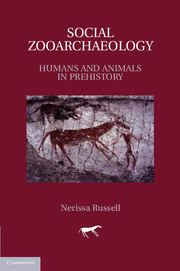Book contents
- Frontmatter
- Contents
- List of tables
- Preface
- 1 Beyond protein and calories
- 2 Animal symbols
- 3 Animals in ritual
- 4 Hunting and humanity
- 5 Extinctions
- 6 Domestication as a human–animal relationship
- 7 Pets and other human–animal relationships
- 8 Animal wealth
- 9 Meat beyond diet
- 10 Studying human–animal relations
- References
- Index
1 - Beyond protein and calories
Published online by Cambridge University Press: 05 June 2012
- Frontmatter
- Contents
- List of tables
- Preface
- 1 Beyond protein and calories
- 2 Animal symbols
- 3 Animals in ritual
- 4 Hunting and humanity
- 5 Extinctions
- 6 Domestication as a human–animal relationship
- 7 Pets and other human–animal relationships
- 8 Animal wealth
- 9 Meat beyond diet
- 10 Studying human–animal relations
- References
- Index
Summary
Our starting point is to recognise that subsistence and economy are not synonyms. Subsistence refers to what people live on; economy deals with the management and mobilization of resources. This is true, of course, for all societies at whatever level of organisational complexity and indicates that if we use only palaeoeconomic data to talk of calories and nutrients, an enormous amount of potential information is being ignored. The questions that any research design should address deal with the links between the management of basic resources (plants, animals, raw materials) and people, and with the transformation and maintenance of institutions within the process of social change and reproduction. (Barker and Gamble 1985:5)
Animals have touched the life of every human. Some of us hunt them, some raise them for food and other products, and some keep them as pets. We may take pleasure from watching birds and other wild animals, and we may struggle to keep some animals, such as mice and rats, away from our houses. Many of us eat them, some use their meat or other body parts medicinally, and we make clothing and other products from their skins and fur. Even if we have little direct contact with animals and use no animal products (surely a very rare occurrence), they provide a rich source of symbolism and metaphor: not only food but also food for thought (Gifford-Gonzalez 2007:10, Lévi-Strauss 1963:89).
The social and symbolic importance of animals stems both from their pervasiveness in our lives and from their animate nature (Digard 1990:220; Galaty and Johnson 1990; Kent 1989). They move and act, are like us and yet different. We value and often admire them, and yet we exploit them. This ambiguity and discomfort permeate human–animal relations. The sense of guilt that is always present to some degree when we kill, confine, and control animals adds to the intensity of our feelings about them (Serpell 1986).
- Type
- Chapter
- Information
- Social ZooarchaeologyHumans and Animals in Prehistory, pp. 1 - 10Publisher: Cambridge University PressPrint publication year: 2011



